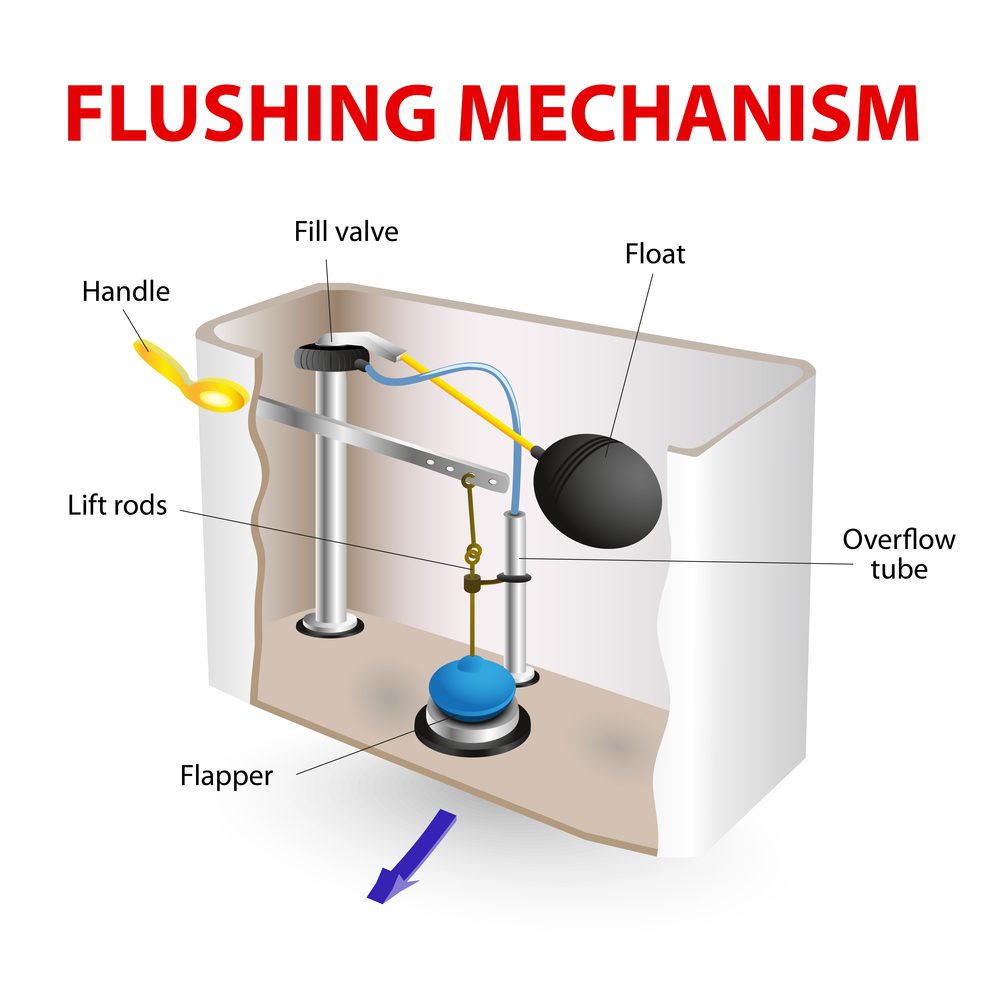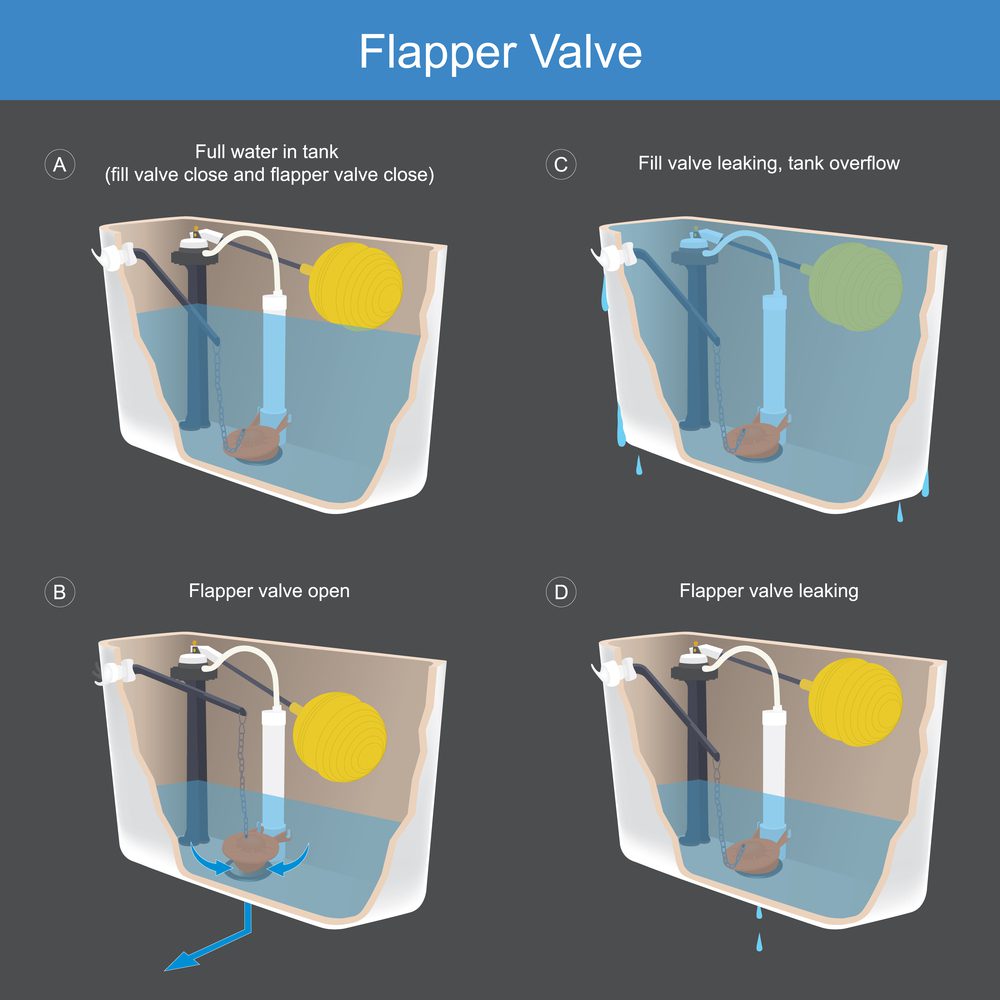If you’re asking yourself, why won’t my toilet flush, you’ve come to the right place. There are several reasons why your toilet won’t flush, such as problems with your toilet handle, water tank, inlet holes, lift chain, and more. In this article, you’ll find all the answers you need.
1. There’s A Problem With Your Toilet Handle
This is one of the easiest problems you can fix. If you press down on your toilet handle and nothing happens, it just means it’s disconnected. Open your tank lid and reconnect the flapper chain to the tank lever. If the handle itself is broken, you can easily buy a new one from your local hardware store or online.
2. There’s A Problem With Your Tank’s Water Level
If there isn’t enough water in your toilet’s tank, it won’t be able to flush because it can’t dump enough water back into the bowl. Open your tank lid and make sure the water is about one inch below the top of your overflow tube (the pipe next to your flapper). If the water is too low, you’re going to want to adjust your float.
- If your toilet has a large rubber ball device – As water rises in your tank, this rubber ball will close off water flow. To increase the amount of water allowed in your tank, simply bend the arm of the float ball upwards.
- If your toilet has a floating cup – These float cups have an adjustment screw on top of the fill valve. To increase the amount of water allowed into the tank, simply turn the screw clockwise to raise the float.
3. There’s A Problem With Your Flapper Or Fill Valve
Open your tank lid and check to see if your flapper is bent, cracked, or not closing properly. If so, you can easily buy a new one online or at your local hardware store.
Another problem could be that there is too much hard water (water with a high mineral content) in your fill valve. All you have to do is simply shut off the water supply to the toilet, remove the float cap, and remove the seal inside the cap. Then, hold a plastic cup over the fill valve and turn the water supply back on. This will cause water to spray out of the fill valve, hence, why you need the plastic cup. Allow the water to flush the valve for about 30 seconds and then return everything to its proper place.
4. There’s A Problem With Your Lift Chain
If your lift chain has too much slack, it won’t be able to pull up your flapper when you flush your toilet. All you have to do is adjust the length of the chain so that it has about 1/2 inch of slack. If the chain is broken or cracked, you’ll need to replace it.
5. There’s A Problem With Your Toilet’s Inlet Holes



Under the lip of your toilet bowl, you’ll find small holes where water will enter your toilet. If these holes are clogged, water won’t be able to fill up your bowl. If you pour hot vinegar down your overflow tube and use a piece of wire to clean the holes, you can clear out any built-up bacteria or mineral deposits.
6. There’s A Problem With Your Drain Line
If your toilet has always had a slow flush, there might be a problem with how your drain pipes were installed. If your drain pipes were sloped in the wrong direction, you’ll need to call a professional to inspect or replace them.
7. Your Drain Pipe Is Clogged
If none of the above problems seem to be the reason why your toilet won’t flush, there’s a chance your drain pipe is clogged. In this case, you have a few different options.
- You can use at-home remedies to clear the clog, such as baking soda and vinegar.
- You can use an enzyme product to liquefy any waste in your pipes.
- You can use a sewer snake to clear out any clogs.
- You can call a professional sewer cleaning company and have them clear your pipes with either hydro-jetting or robotic cutting.

8. Your Sewer Pipe Is Damaged
If all of your toilets won’t flush, your sewer pipe may be damaged and need replacement. Now’s the time to call in the professionals. Here are three of the most common solutions used by sewer specialists.
- Pipe lining – Pipe lining is when an epoxy-impregnated liner is inserted into your old sewer pipe, inflated, and then removed, leaving behind a brand new pipe.
- Pipe bursting – Pipe bursting is when a brand new pipe is pushed into your old one, breaking it apart and immediately replacing it.
- Traditional pipe replacement – If your sewer pipes are too damaged, and pipe lining and pipe bursting are not viable solutions, professionals will have to dig and replace your sewer pipes manually.
Who Do You Call If Your Toilet Won’t Flush?
If you need professional solutions and live in Glendora, California, you should call SWE Sewer Solutions & Engineering. We are a bonded, city-approved, and licensed contractor offering sewer line repair, replacement, hydro-jetting, robotic cutting, and more. Call today for your free inspection and estimate.